All the tips to prepare beautiful and tasty ricotta ravioli that won’t open during cooking!
Ricotta ravioli are a typical Ragusan specialty: the main dish of rural farmhouses, but imagine making them at home?
Whole Wheat Ricotta Ravioli
The homemade whole wheat dough without eggs is easy to prepare but slightly more delicate to handle and roll out.
If you are a beginner, I recommend using remilled durum wheat semolina.
The ricotta is cow’s milk ricotta from 1-2 days before.
… in Ragusa, they add sugar, in Modica they don’t; in this case, for obvious reasons of hyperglycemia, we will follow the Modican example.
Ricotta ravioli are a one-pot meal that combines the characteristics of a balanced meal in a single dish.
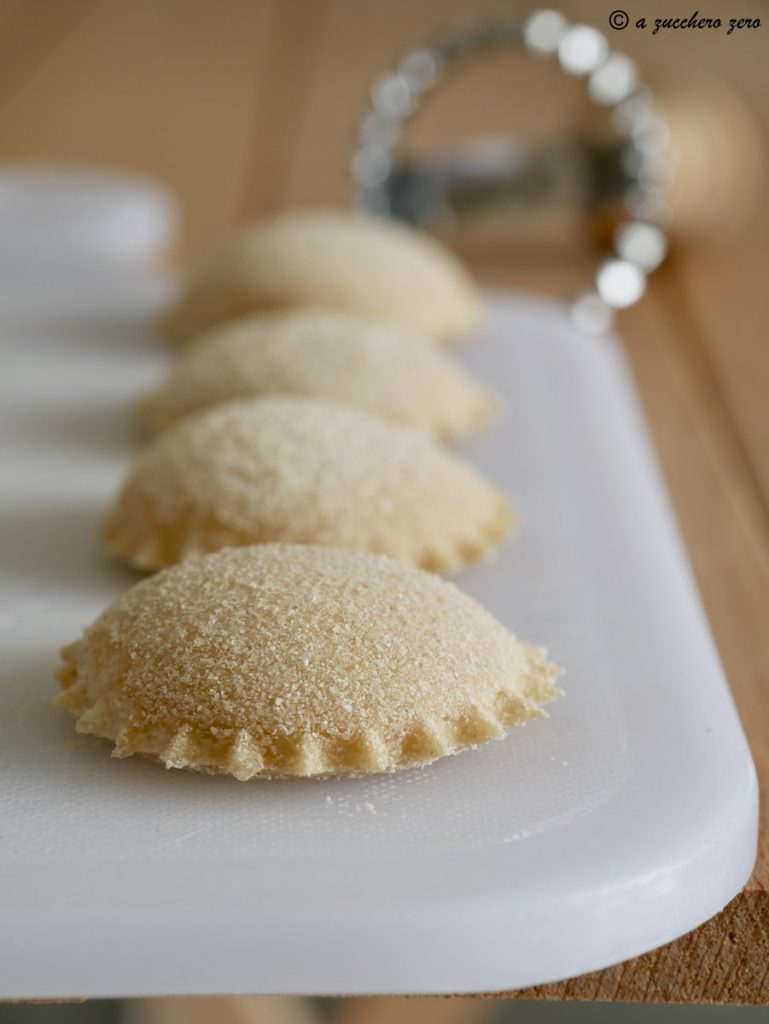
- Difficulty: Medium
- Cost: Medium
- Rest time: 30 Minutes
- Preparation time: 40 Minutes
- Portions: 2 People
- Cooking methods: Boiling
- Cuisine: Italian
Ingredients
Consider 16 ravioli diameter 2 inches.
The homemade whole wheat dough without eggs is easy to prepare but slightly more delicate to handle and roll out.
If you are a beginner, I recommend using remilled durum wheat semolina.
The ricotta is cow’s milk ricotta from 1-2 days before.
- 1.5 cups stone-ground whole wheat durum flour (or remilled durum wheat semolina)
- 1 pinch salt
- 1/2 cup water
- as needed semolina (for rolling out the dough)
- 7 oz cow's milk ricotta (1-2 days old, well-drained)
- 1 pinch salt
- 1 pinch mixed peppercorns (with grinder)
- as needed marjoram (preferably fresh leaves)
- as needed ground cinnamon (optional)
… in Ragusa they add sugar, which I replace with cinnamon.
Suggested Tools
- Bowls
- Pastry Bag disposable
- Mat work surface
- Rolling Pin
- Stamp for ravioli
Preparation
In a bowl, pour:
• the semolina or whole wheat semolina;
• a pinch of salt;
• the water.Start kneading inside the bowl.
If necessary, add more water – a few ml – taking care not to get a sticky dough that would be difficult to roll out.Move the dough to a lightly floured cutting board or work surface and continue to work it until you get a firm and elastic dough.
Wrap the dough in plastic wrap or inside a freezer bag, place it in the fridge, and let it rest for half an hour.
It will be easier to work.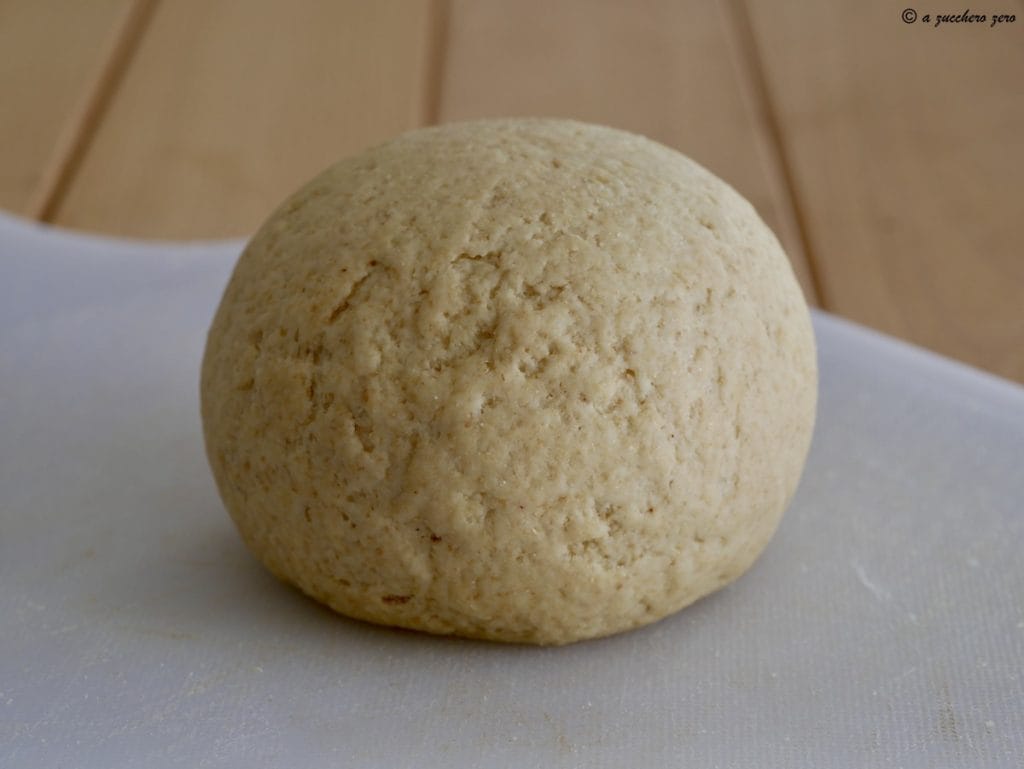
In a bowl, pour:
• the well-drained and dry ricotta;
• a pinch of salt;
• a pinch of pepper;
• as needed marjoram;
• as needed cinnamon [optional];
and coarsely work it with a fork.Transfer the seasoned and worked ricotta into a pastry bag [I used a disposable one] and keep it in the fridge until use.
Take the dough out of the fridge.
Line a tray with a sheet of parchment paper to transfer the ravioli onto and sprinkle some semolina on it.
Sprinkle some semolina on the work surface and the dough.
I used a non-stick silicone mat as a work surface, which hardly needs to be floured.
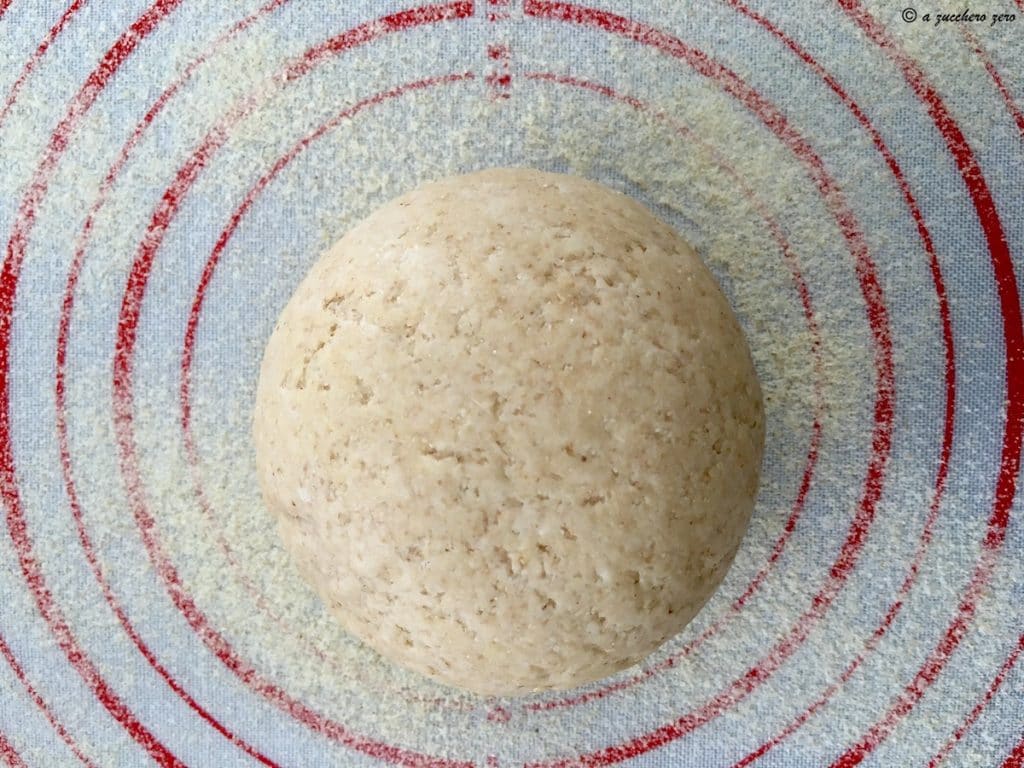
Divide the dough into two equal pieces and roll each piece with the rolling pin.
You must obtain two sheets:
• thin enough so they don’t crack, releasing the filling;
• more or less the same shape and size as they will be overlapped;
• large enough to cut your ravioli without having to re-knead and roll out [in any case, if it’s not, don’t worry: you just have to repeat the process].Flour the sheet only on the side that faces down so that the side that faces up maintains its ability to adhere to the second sheet of pasta.
Distribute the ricotta with the help of the pastry bag on the first sheet, spacing it out into lumps just enough to allow you to cut the ravioli with the mold.
Using the pastry bag instead of the traditional spoon distribution allows you to avoid dirtying the sheet, preventing the inconvenience that the ravioli don’t close well.The number and size of the ravioli will depend on the dimensions of your mold.
I used a ravioli mold with a wooden handle, round with serrated edges, and a diameter of 2 inches, obtaining 16 well-filled ravioli.
Thanks to the serration, the ravioli are perfectly sealed, and the filling doesn’t come out.
The choice of mold is crucial for the success of the ravioli.Carefully place the second sheet of pasta over the first.
With the help of the mold, cut the ravioli by pressing well so that the edges separate cleanly and the pressure seals them.To be more confident that they won’t open, you can reseal the edges with your fingers.
Some people use a needle to prick the ravioli to release the air.Your Whole Wheat Ricotta Ravioli Ragusan Recipe are ready.
Cooking time: 7 minutes.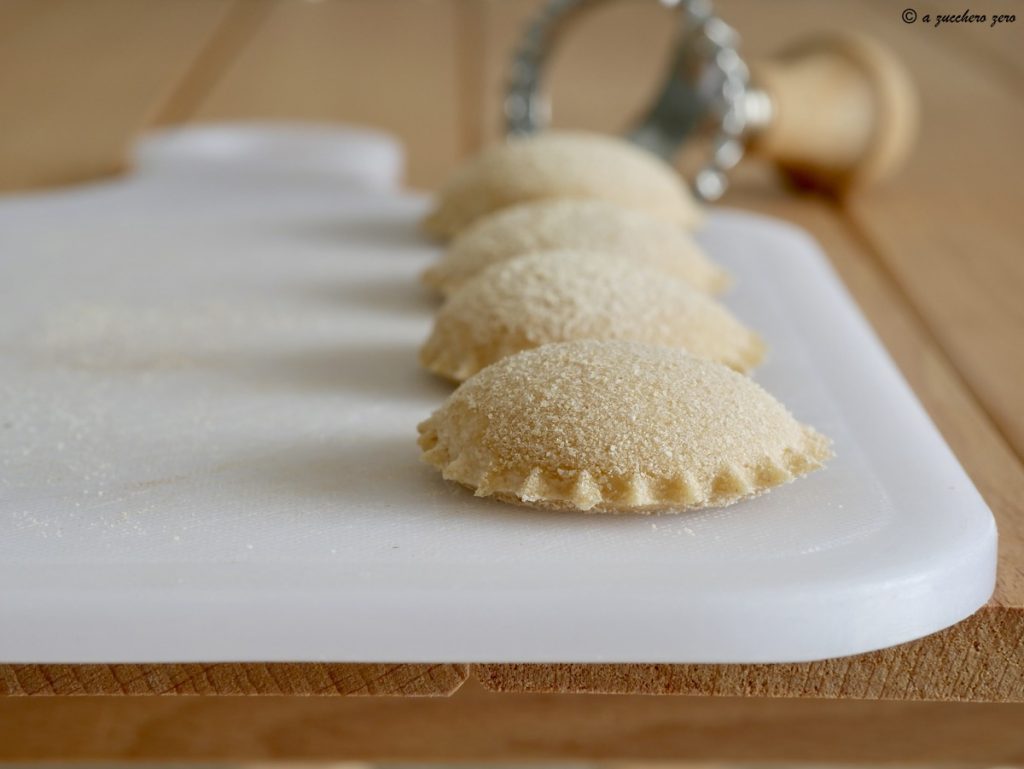
Rework the leftover dough and make cavati to eat along with the ravioli.
Cooking time: 5 minutes.Be sure to drop the cavati into the pot 2 minutes after the ravioli.
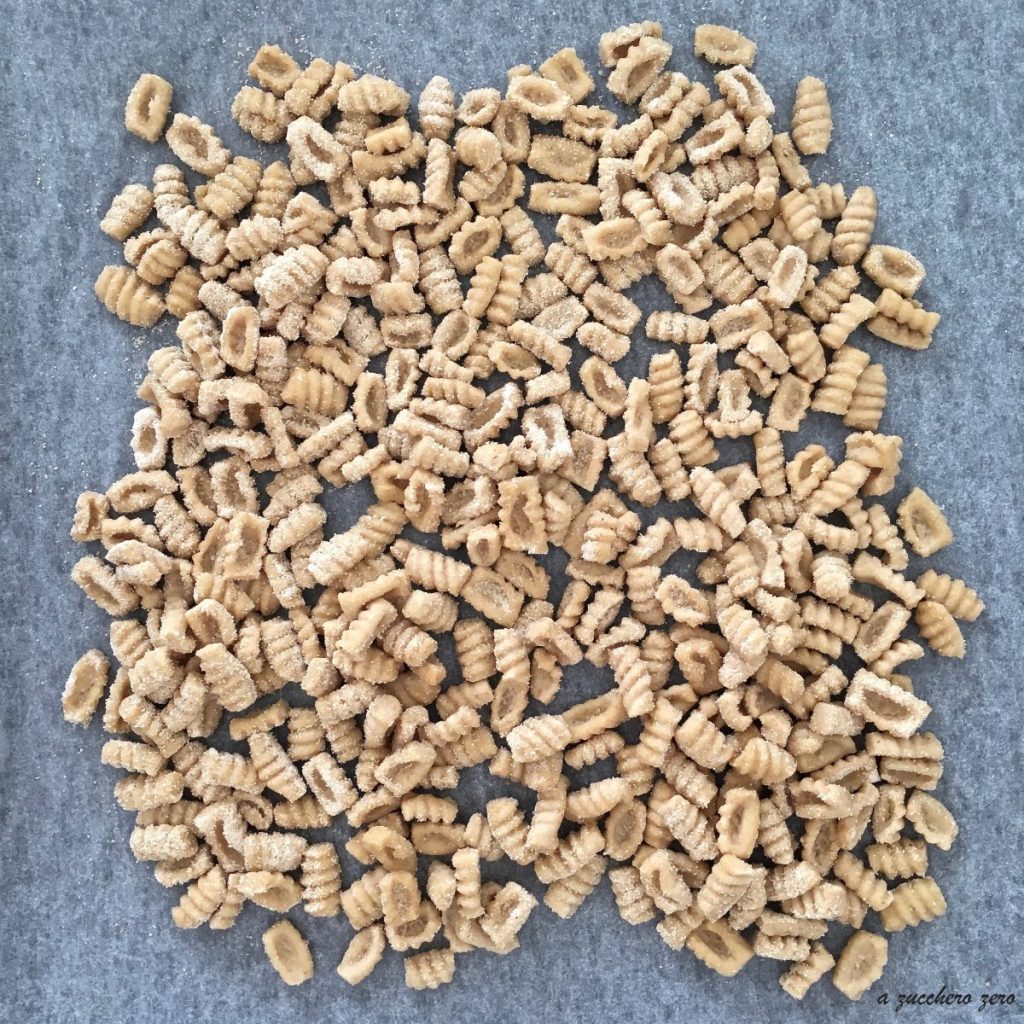
• Don’t throw the ravioli into the pot but accompany them gently into the water;
• Likewise, don’t drain the ravioli by pouring them into a colander, but scoop them out using a slotted spoon and transfer them to the colander.
This way, your ravioli will hardly open.Ricotta ravioli are a one-pot meal that combines the characteristics of a balanced meal in a single dish, so it’s enough to dress them with simple tomato sauce and a sprinkle of grated cheese.
Ragusan Ricotta Ravioli are usually served along with cavati and dressed with pork sauce; alternatively, try the sauce with lean sausage.

How to Store Ricotta Ravioli?
Ricotta ravioli can be stored:
• in the fridge for 24-48 hours maximum;
• in the freezer for 2-3 months maximum.
Before placing them in the freezer, let them dry for a couple of hours, then place them in a food container or on a tray – be sure to space them out – and put them in the freezer for a couple of hours, after which you can move them to appropriate bags.
My advice is to consume them fresh or store them in the fridge for a maximum of 24 hours as the moisture of the ricotta could compromise their quality.
Variants
Once you have mastered the technique, you can replicate the preparation of ravioli with any filling you desire: other cheese, meat, fish, or vegetables.
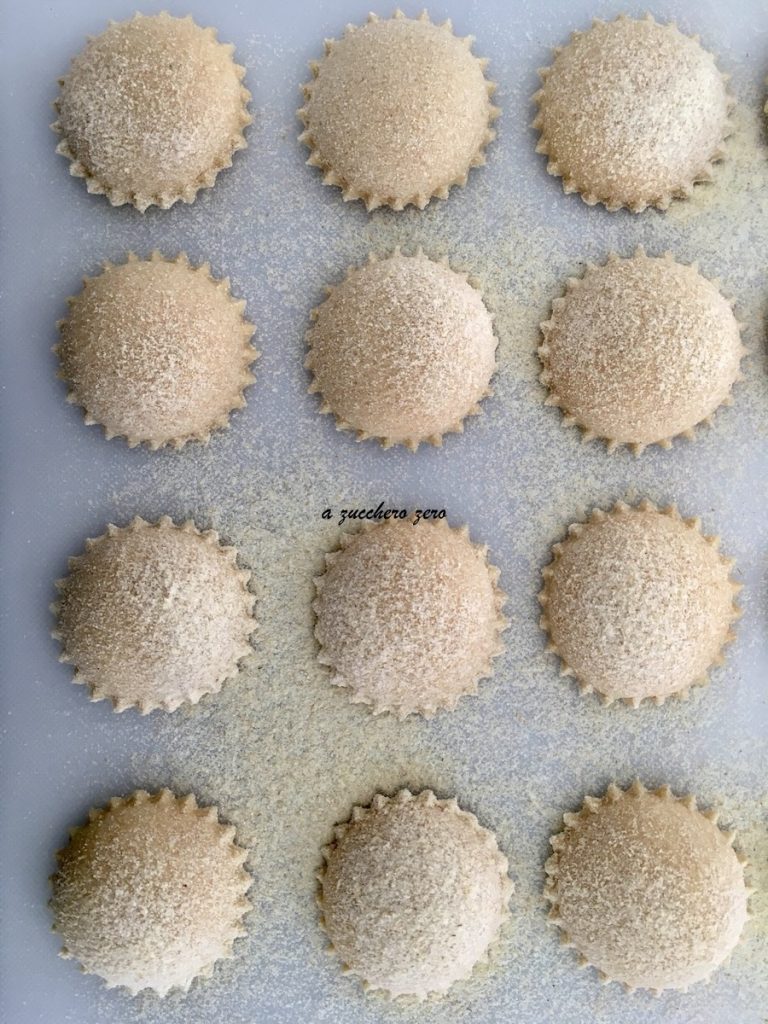
FAQ (Frequently Asked Questions)
Fresh Pasta and Glycemia
Fresh pasta has a different glycemic index than dry pasta and a low fiber content.
How Many Ravioli per Person?
Consider 8-10 ravioli per person.

